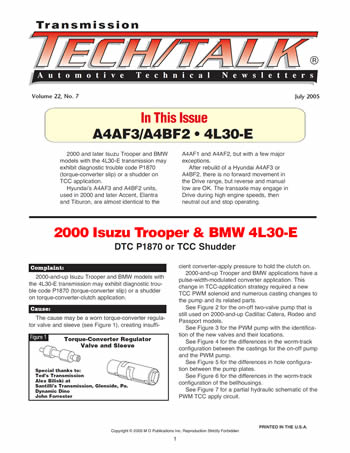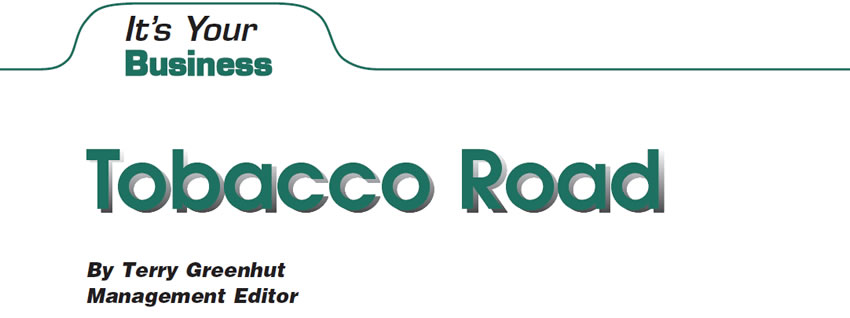Understanding Synchronization
One of the least-understood and most-commonly misdiagnosed complaints/problems with manually shifted transmissions and transfer cases is synchronization.

12-Valve Cummins Diesel/618 Transmission
A 1994 Dodge R2500 pickup was brought to a transmission shop. The customer complaint was no overdrive when cold and that as the vehicle got up to operating temperature the overdrive would engage but would go in and out with throttle opening.

July 2005 Issue
Issue Summary:
2000 and later Isuzu Trooper and BMW models with the 4L30-E transmission may exhibit diagnostic trouble code P1870 (torque-converter slip) or a shudder on TCC application.
Hyundai’s A4AF3 and A4BF2 units, used in 2000 and later Accent, Elantra and Tiburon, are almost identical to the A4AF1 and A4AF2, but with a few major exceptions.
After rebuild of a Hyundai A4AF3 or A4BF2, there is no forward movement in the Drive range, but reverse and manual low are OK. The transaxle may engage in Drive during high engine speeds, then neutral out and stop operating.

The Trooper Blues
The description for code 37 says this “serial line” is the wire that is connected from the transmission control module to the engine control module and the diagnostic connector. This wire is used for torque management. How it works: The TCM delivers a spark-advance signal to the ECM during each shift, through this serial line, to reduce engagement shock. Any interruptions, shorts or opens on this line will set a code 37.

Gear Head
Our instructor began by teaching us that a simple planetary gear set consists of 1) a center sun gear, 2) a carrier with three or more pinion gears that are free to rotate on their pins around the sun gear and 3) the internal ring gear, which meshes with the pinion gears. Then he started to say, “If you hold the internal gear stationary and drive the sun gear, you will see the pinions drive the carrier in the same direction as the sun gear but at a reduced speed with increased power.” This is where some of my fellow classmates started to get bored.

Tobacco Road
Outside sales is not a one-time task. It’s an ongoing process that allows you to identify the types and number of accounts you will want to service, to prepare the best possible sales materials, to learn techniques that get and keep your foot in the door, to handle objections so you can land the accounts and especially to visit all existing accounts periodically to make sure they continue to exist.

